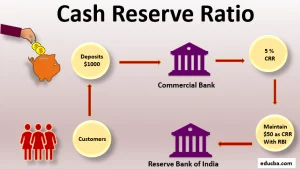The path to financial success rarely happens overnight. Smart traders know that steady growth beats flashy one-time wins. Compounding might be the most underused strategy in a trader’s toolkit. You’ve probably heard about compound interest from bank accounts. But did you know this same principle can transform your trading results? The math behind compounding is straightforward but incredibly powerful. This article explores how compounding can multiply your trading profits over time. I’ll share practical steps to implement this approach in your trading strategy. Let’s unlock the secret on how to compound your trading returns and make big money.
What is compound interest in trading?

Compound interest in trading means reinvesting your profits to generate even more returns. Unlike simple interest, compound interest calculates earnings on both your initial investment and accumulated gains. This creates a snowball effect for your money. The longer you keep reinvesting, the larger your potential returns become. Think of it as money making more money without extra effort from you. Your previous successes literally fund your future growth.
Most traders focus only on individual trade outcomes. They miss the bigger picture of portfolio growth over time. Compounding works by keeping profits in your trading account rather than withdrawing them. Each successful trade increases your capital base for the next opportunity. Your account can grow exponentially rather than linearly with this approach.
Compound trading transforms modest returns into significant wealth through consistent reinvestment. A 2% monthly return might seem small, but compounded over the years, it becomes impressive. This strategy requires patience and discipline, qualities many traders lack. The power lies in allowing your money to work harder with each successive trade.
How do you leverage compound interest?
Leveraging compound interest begins with a commitment to reinvest profits consistently. You must resist the urge to withdraw gains after successful trades. Instead, view these profits as fuel for future opportunities. This mindset shift is crucial for compound trading success.
Next, focus on percentage returns rather than dollar amounts. A 5% gain on $10,000 becomes a 5% gain on $15,000 after your account grows. The same percentage yields more actual dollars as your capital increases. This accelerating effect explains why compounding becomes more powerful over time.
Risk management becomes even more important with compound trading. Protecting your growing capital ensures the compounding effect continues uninterrupted. Many traders use smaller position sizes as their account grows. This prevents one bad trade from erasing multiple periods of compounding benefits.
Frequent trading isn’t necessary for successful compounding. Quality matters more than quantity in this approach. Look for high-probability setups with favorable risk-reward ratios. Even monthly or quarterly trades can produce remarkable results when compounded over the years.
Does compounding work in the stock market?
Compounding absolutely works in the stock market. Historical data shows its effectiveness across market cycles. The S&P 500 has averaged about 10% annual returns over the long term, and when these returns compound, the results are remarkable.
Let’s consider why compounding works so well with stocks. Companies grow their earnings over time, fueling price appreciation. Many also pay dividends, which can be reinvested to buy more shares. This creates a double-compounding effect unique to equity markets.
Stock markets offer the perfect environment for compound growth strategies. Their overall upward bias supports long-term compounding approaches. Even during temporary downturns, patient investors continue accumulating shares at lower prices.
Diversification across multiple stocks enhances compounding potential while reducing risk. Different sectors perform well during various economic conditions. This creates more consistent compound returns compared to trading a single asset.
What is the magic of compounding?
The magic of compounding lies in its exponential growth pattern. Initial results seem underwhelming, but patience reveals its true power. Albert Einstein reportedly called compound interest the eighth wonder of the world. The description fits when you witness its long-term effects.
When introducing this concept, I like to tell people about the famous story of the rice and chessboard. One grain doubles each square, resulting in mountains of rice by the end. This illustrates how compounding creates surprising outcomes through doubling. The principle applies directly to your trading account.
The most fascinating aspect of compounding is how it accelerates over time. The first few years show modest growth. Then suddenly, the curve steepens dramatically. This explains why compounding rewards patient traders more than impatient ones.
Most trading strategies focus on immediate results. Compounding forces us to think differently about time horizons. The approach transforms average returns into exceptional wealth through consistency and patience.
What is an example of compounding in the stock market?
Consider an investor starting with $10,000 and achieving a 15% annual return. Without compounding, they’d earn $1,500 yearly, reaching $25,000 after ten years. With compounding, their account grows to over $40,000 in the same period. The difference becomes even more dramatic over longer timeframes.
Dividend reinvestment offers another clear example of compounding at work. A stock paying a 3% dividend might not seem exciting initially, but reinvesting those dividends for decades can substantially multiply your share count. Each new share generates its own dividends, creating a virtuous cycle.
Many successful investors attribute their wealth to compounding rather than stock picking skill. Warren Buffett amassed most of his fortune after age 50 through the power of compound returns. His strategy emphasizes long holding periods that maximize compounding benefits.
Due to additional factors, real-world compounding often exceeds theoretical models. Companies increase dividend payments over time, and investors add new capital periodically. These elements enhance the already powerful compound effect.
Benefits of Compound Trading
The primary benefit of compound trading is building wealth without requiring larger initial investments. Your money works increasingly harder as your account grows, creating a self-reinforcing cycle that accelerates over time.
Compound trading reduces the pressure to make perfect trades. Consistent modest returns compound into impressive results. You don’t need home runs when singles and doubles compound effectively. This removes much of the psychological pressure from trading.
Another advantage is that compound trading works with almost any strategy. Compounding principles apply equally when trading options, stocks, or forex. The mathematical advantage works regardless of your preferred market or approach.
Compound trading encourages healthy trading habits like discipline and patience. The strategy naturally rewards long-term thinking over impulsive decisions. Many traders discover improved overall performance after adopting a compounding mindset.
Steps to Start Compound Trading
Setting Clear Goals and Expectations
When introducing goal setting, I must emphasize realistic expectations. Many traders fail because they expect too much too soon. Compound trading requires understanding the timeframe for meaningful results. Set achievable return targets based on your strategy and market conditions.
Define both short-term and long-term objectives for your compound trading plan. Monthly or quarterly goals keep you focused. Yearly and multi-year targets highlight the bigger compounding picture. Write these goals down and review them regularly.
Your compound trading goals should include more than just return percentages. Consider risk parameters, drawdown limits, and consistency metrics. A comprehensive approach ensures sustainable compounding rather than temporary success followed by large losses.
Expect challenging periods when implementing compound trading strategies. Markets move through different cycles and conditions. Prepare mentally for these inevitable challenges. Realistic expectations prevent abandoning the strategy before compounding magic happens.
Creating a Detailed Trading Plan
A detailed trading plan serves as your roadmap for successful compound trading. When discussing trading plans, I recommend including specific entry and exit criteria. Clear rules prevent emotional decisions that interrupt the compounding process.
Your plan should specify position sizing based on your current account balance. Many compound traders use fixed percentage risk rather than fixed dollar amounts. This approach naturally increases position size as your account grows while maintaining consistent risk levels.
Include rules for handling profits within your trading plan. Determine what percentage stays in your account for compounding. Some traders reinvest everything; others withdraw a small portion to enjoy current benefits while still compounding.
Review and update your trading plan regularly as your account grows. Approaches that work for smaller accounts might need adjustment at higher capital levels. This ensures your compounding strategy remains optimal throughout your trading journey.
Tracking Profits and Losses
Accurate tracking forms the foundation of successful compound trading. When introducing tracking systems, I suggest recording every trade with detailed notes. Monitor both individual trade performance and overall account growth patterns.
Calculate compound returns rather than simple returns to understand your true progress. Many trading platforms only show simple returns by default. Use spreadsheets or specialized software to track compound growth rates accurately.
Compare your actual results against theoretical compounding projections regularly. This identifies whether you’re on track or need strategy adjustments. Small improvements in your approach can dramatically impact long-term compound results.
Track drawdowns carefully, as they significantly impact compound returns. A 50% loss requires a 100% gain just to break even. Protecting capital during difficult periods preserves your compounding potential for future opportunities.
Establishing Withdrawal Strategies
Smart withdrawal strategies balance current needs with future compound growth. When discussing withdrawals, I advise establishing clear rules about when and how much to take. Many successful traders withdraw only the amount that maintains their compound growth trajectory.
Consider withdrawing a fixed percentage of profits rather than a fixed dollar amount. This approach scales naturally with your account size. It allows you to enjoy some current benefits while preserving most compounding potential.
Tax implications should influence your withdrawal strategy decisions. Consult with financial professionals about optimizing your approach. Sometimes, regular smaller withdrawals prove more tax-efficient than large annual ones.
Reassess your withdrawal strategy as your financial situation changes. Early in your trading career, reinvesting everything maximizes compounding effects. Later, you might increase withdrawal rates as your account reaches substantial levels.
Maintaining Discipline and Emotional Control
Emotional discipline separates successful compound traders from the rest. When introducing this topic, I emphasize that consistency trumps occasional brilliance. Avoid revenge trading after losses or overconfidence after wins.
Develop routines that reinforce disciplined trading behaviors. Daily preparation, regular review sessions, and trading journals build healthy habits. These practices support the consistency needed for effective compounding.
Prepare for the psychological challenges specific to compound trading. The strategy feels painfully slow initially, testing your patience. Later, larger account swings require steady nerves despite bigger dollar amounts at stake.
Find accountability partners or mentors who understand compound trading principles. Regular discussions with like-minded traders reinforce discipline during difficult periods. Community support substantially increases your chances of compounding success.
Conclusion
Compound trading transforms ordinary returns into extraordinary wealth through the power of reinvestment. The strategy doesn’t require exceptional market skills or perfect timing. Consistency, patience, and discipline matter more than trading brilliance.
Start your compound trading journey today with realistic expectations. Small improvements in your approach can dramatically impact long-term results. Remember that compound growth accelerates over time, rewarding those who persist.
The financial independence you seek might be closer than you think through compound trading. Albert Einstein wasn’t wrong when he called compound interest the eighth wonder of the world. Apply these principles consistently, and watch your trading account grow beyond your expectations.
Also Read: What is the Reserve Requirement Ratio?
FAQs
You can start with any amount, but larger initial capital accelerates the compounding effect.
Most successful traders aim for 2-5% monthly returns for sustainable compounding.
Noticeable results typically appear after 3-5 years of consistent compound trading.
Reinvesting 70-100% of profits provides the best balance between current income and future growth.
Yes, quality trades matter more than quantity for successful compounding.



